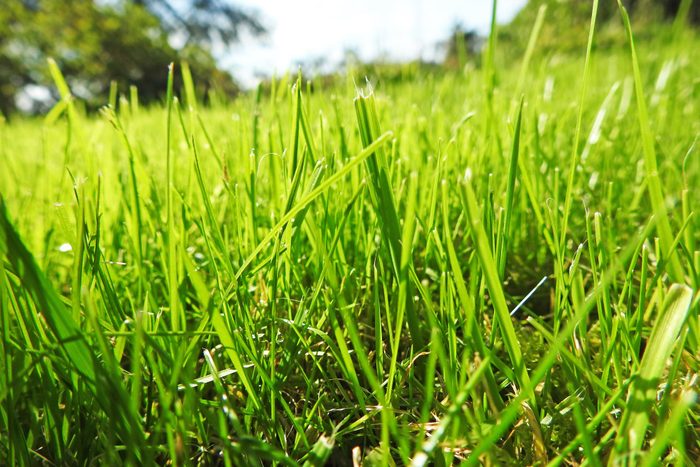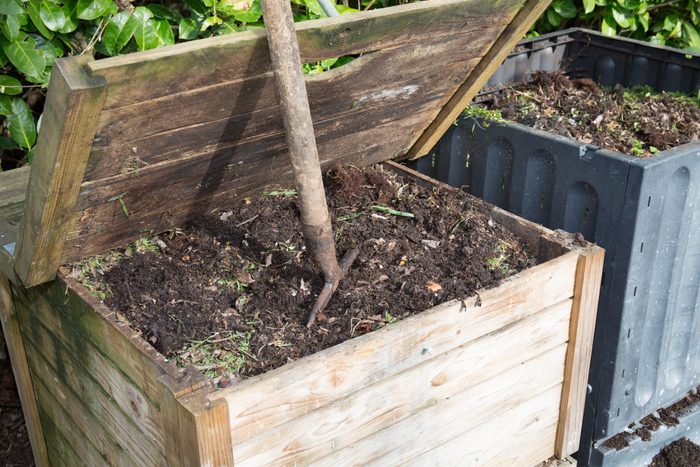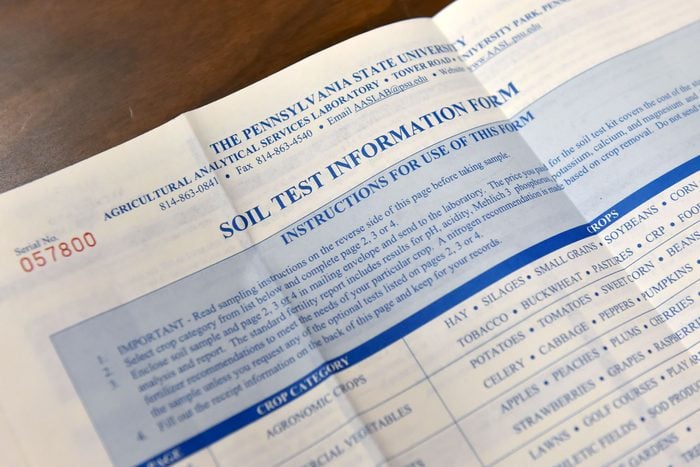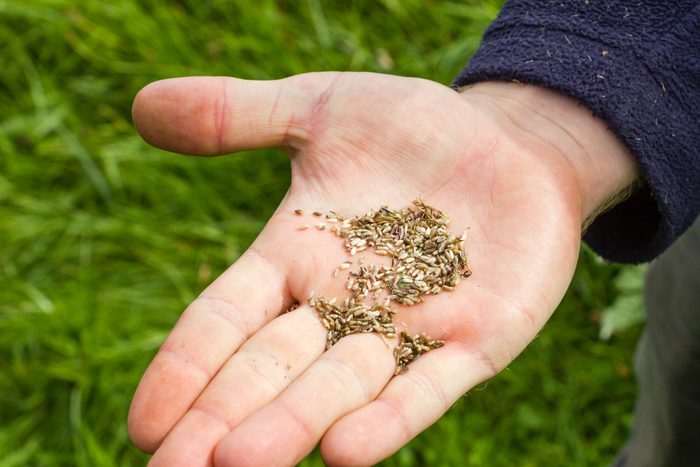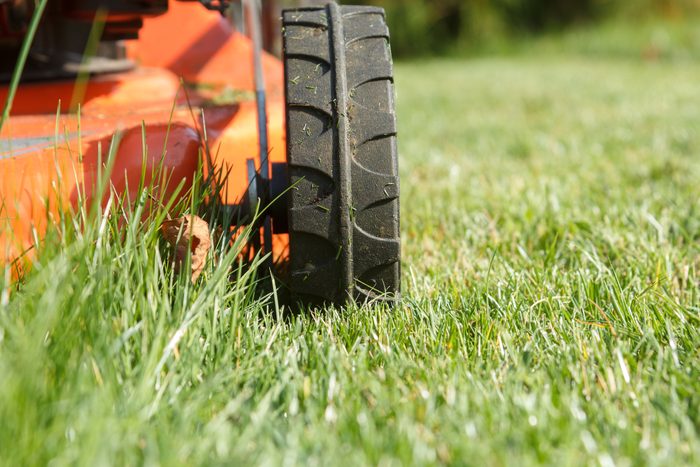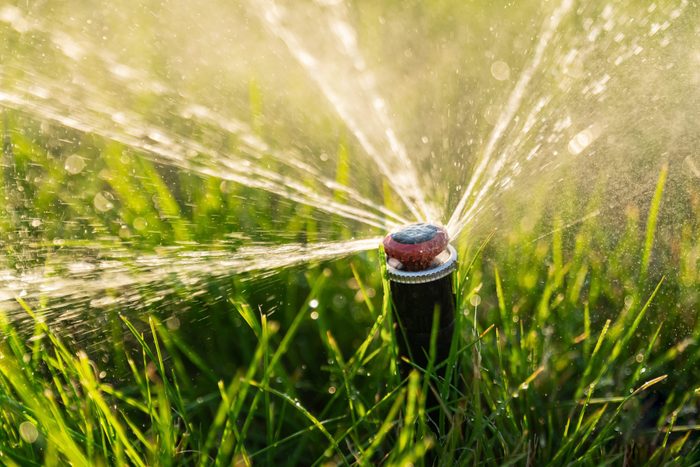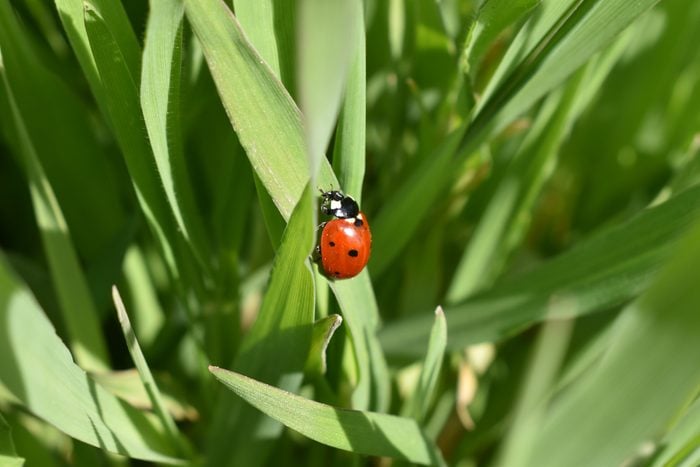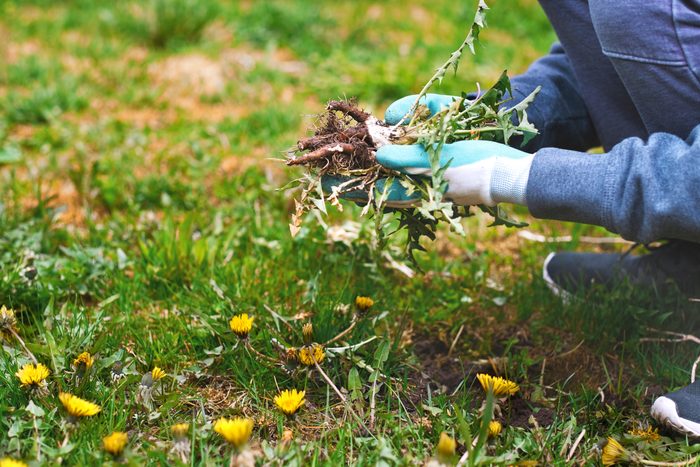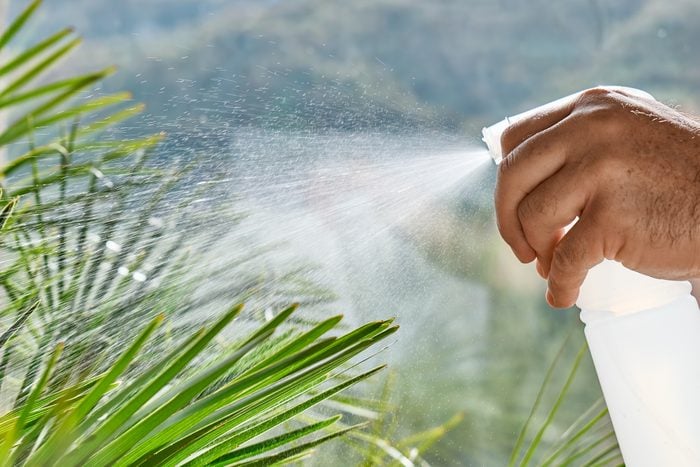Stop Using Chemicals
Start fertilizing naturally with a heavy top-dressing of compost and organic mulch. Ali calls this the first and most important step. “This process doesn’t happen overnight,” he says. “It may take a few years for the soil to fully rebound and be full of natural, living microorganisms, but it’s worth the wait!”
Test Your Soil
Determine what nutrients you’re lacking so you can add them for a successful transition. Your local county or university extension service can guide you through a soil test. Once the results are in, you may need to add amendments like lime to change your soil’s pH. Make sure to choose all organic amendments.
Choose Your Seed
To convert your lawn, decide what sustainable ground cover you want to replace your turfgrass. Options include native grasses, clover (especially good for bees and people with beehives), Corsican mint, creeping thyme or pretty sedge. Then overseed your lawn with it.
“This step will provide a dense mat of grassroots that will have the ability to choke out weeds,” says Ali. “As an added bonus, this thicker root system will be a more efficient carbon sink and will create more organic matter in the soil as it breaks down.”
Mow Savvy
Ditch gas-powered lawn equipment and switch to an electric or push mower, which also chops up clippings and releases them back into the grass. That eliminates the need for plastic bags and returns nutrients to the soil.
Increase the height of the mowing blade to at least three or four inches. Longer grass encourages a deeper root system and better habitat growth for pollinators and other wildlife in the yard. However, if you live in a place where the grass grows quickly in the spring, note that extra long grass can become a tripping hazard.
Also, mow less often. Lawns mowed every two weeks or less support more bees. Note that once temperatures reach 70 degrees, grass growth will start to slow. ***Then once fall comes around, take another pass with the mower just before a hard frost, which will help prevent fungal issues.
“While many people tout allowing leaves to remain on the lawn, it is better to mow them, especially large thick leaves like magnolias,” says Denise Schreiber, an author and retired arborist. “Use them as mulch in beds or leave them on the grass to break down naturally.”
Plant Native and Water Wisely
Gradually replace exotics with native plants and grasses that require less, if any, water and fertilizer once they’re established. Choose plants and seeds that are organic or grown free of synthetic chemicals, and whose seeds weren’t treated with neonics. The latter can harm many organisms, including birds.
To water sustainably, do it longer but less often. Again, with grass, letting it grow longer will reduce its need for water.
Love Bugs (or at Least Leave Them Alone)
Let your lawn and garden be a welcoming place for beneficial insects, especially pollinators. They, in turn, will act as natural pest control agents while boosting the productivity of your garden. Plant pollinator-friendly native flowers among your vegetables to attract ladybugs, and let some of your herbs flower to draw in hoverflies.
“The larvae of these insects have voracious appetites and can eliminate an aphid infestation quickly,” says Ali. “Leave some plant debris or a loose layer of mulch to give spiders a place to hide, and they will happily provide control of such insects as beetles, mosquitos and flies.”
Also, alyssum and daisies attract parasitic wasps for caterpillar and tomato hornworm control.
Don’t Get Weeded Out
Though it might be tempting to just let nature take over, some weeds are worth the effort to pull so they don’t take over your natural plot or invade your neighbor’s lawn.
“Remove invasive weeds, such as hairy bittercress, crabgrass, thistles and wild strawberry, by hand,” says Schreiber. “The last can cause a fall-slipping hazard, especially in areas where there are slopes in the lawn. I speak from experience.”
When All Else Fails
Sometimes with weeds, you might have to break out the big guns. Luckily there are many natural weed killers on the market. Schreiber recommends Burnout or horticultural vinegar.
“The ‘hack’ weedkiller that involves dish soap, Epsom salts, [regular] vinegar, etc. is wonderful if you want to kill beneficial organisms, worms and the like,” says Schreiber. “And it mostly top kills weeds which will come back and does nothing for seeds.”
You can also try a pre-emergent preventer like corn gluten, which will kill most weed seeds in your lawn.

